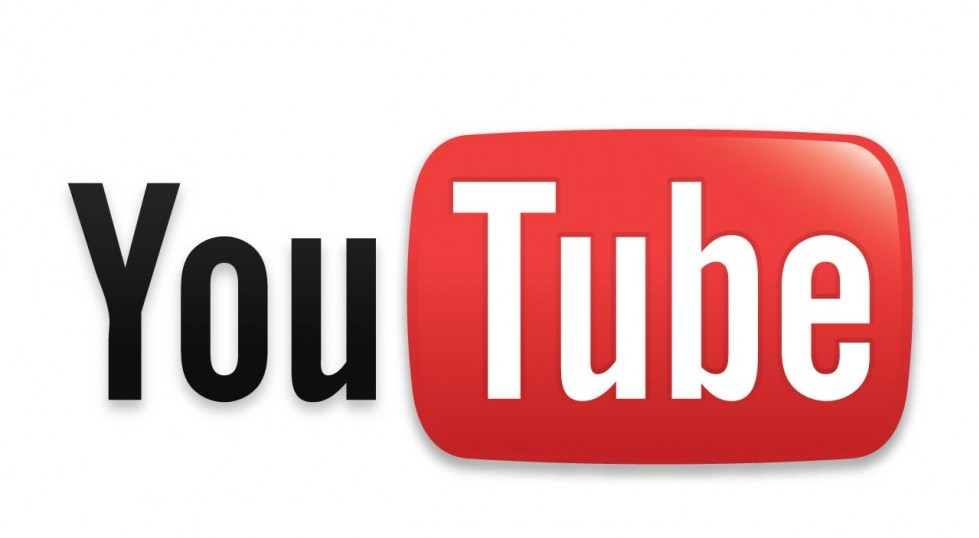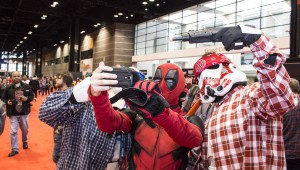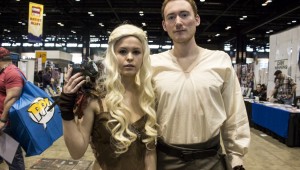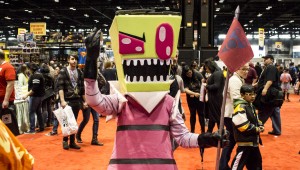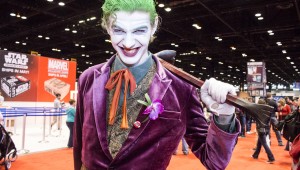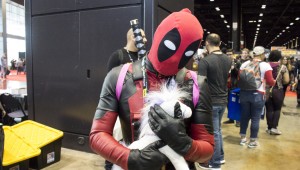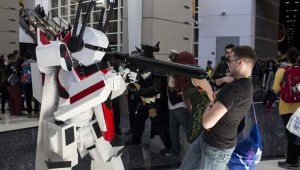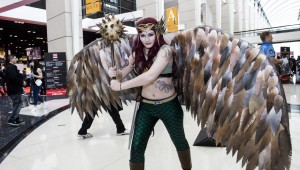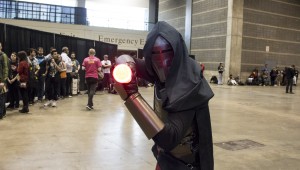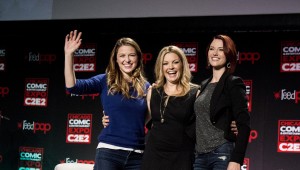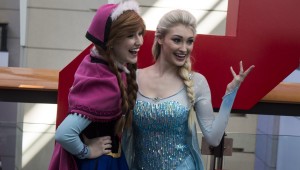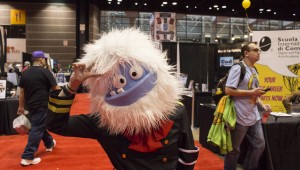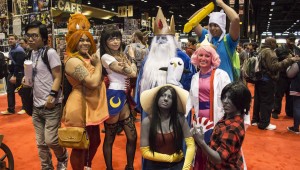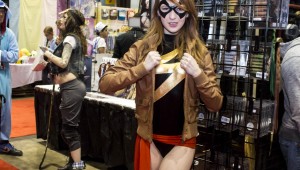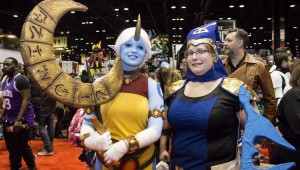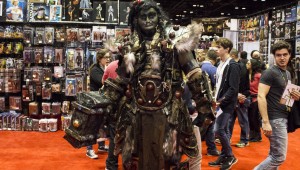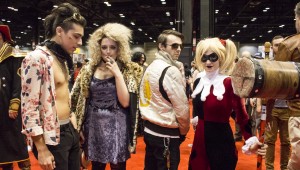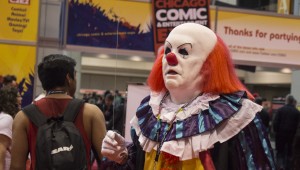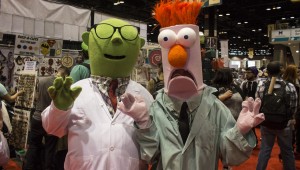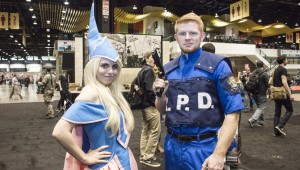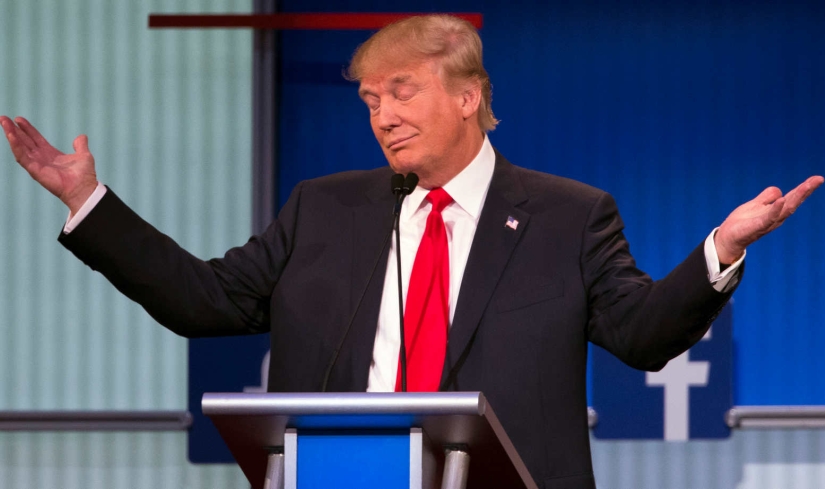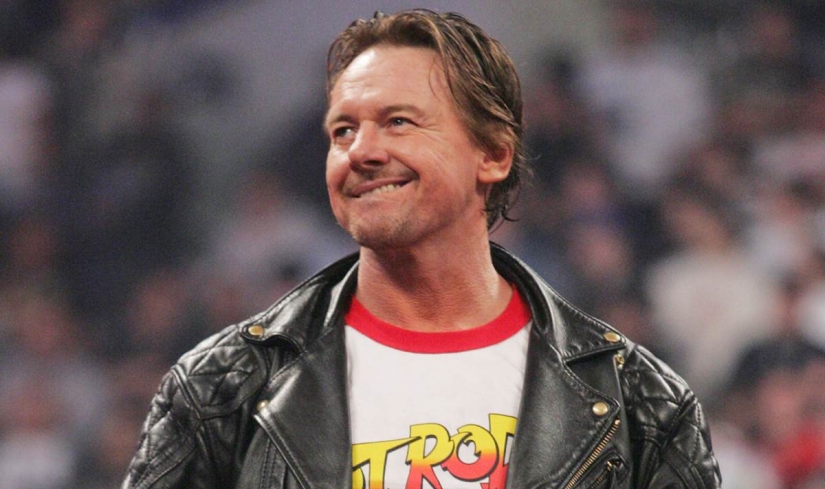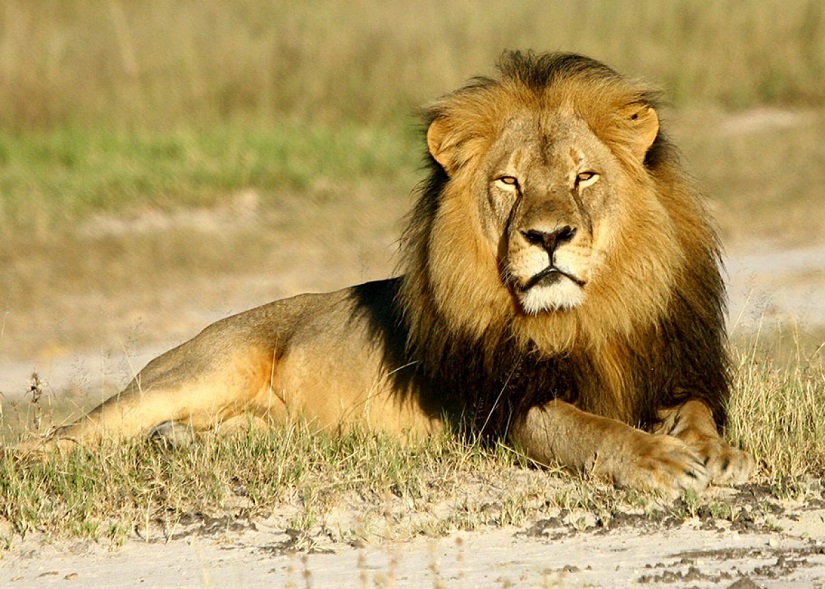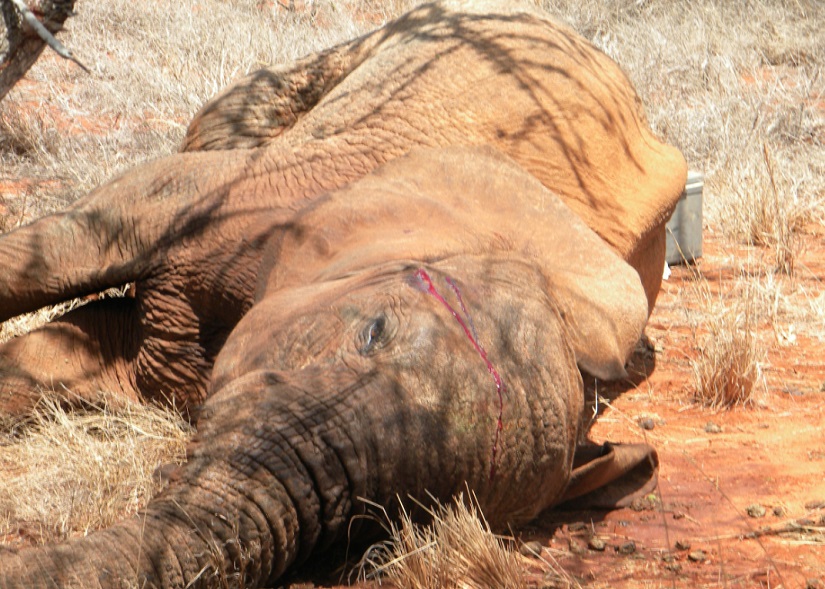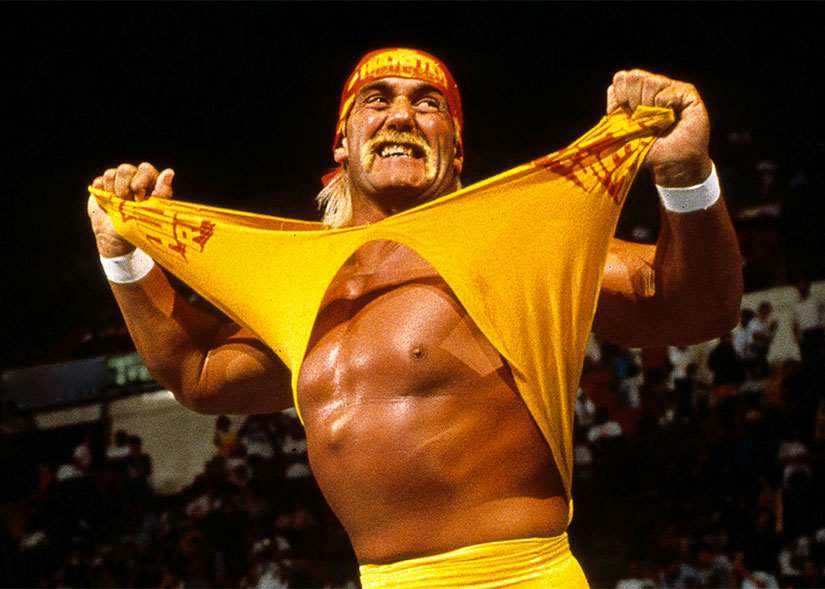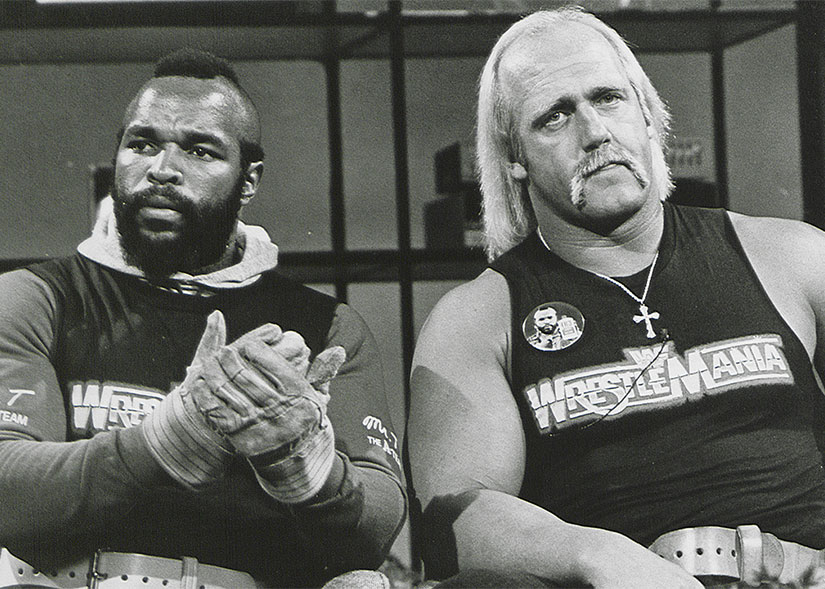Five Bottled Cocktails That Are Actually Good
Sometimes you want a mixed drink, but you won’t want to mix it. The solution? Bottled cocktails. Despite their less-than-fantastic reputation, pre-bottled cocktails have come a long way. Here are five actually good bottled cocktails for a low-fuss, high-quality time:
1. CRAFTHOUSE COCKTAILS
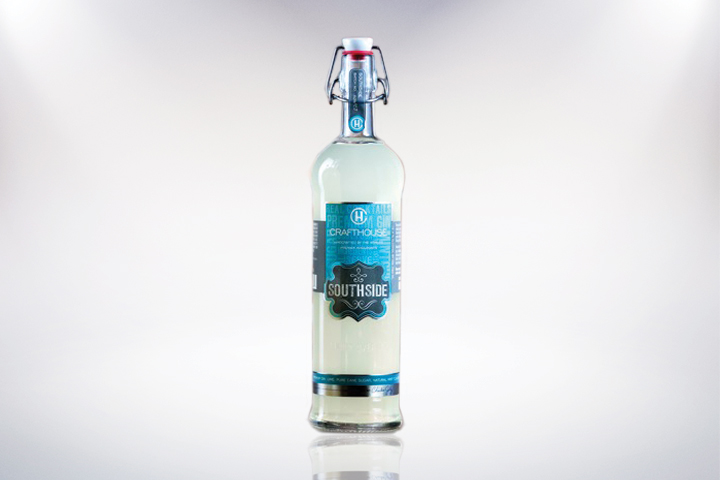
Created by Chicago bartender Charles Joly, Crafthouse offers three drinks:
- Moscow Mule: Crafthouse takes this classic cocktail and runs with it, using high-quality ginger beer that’s more spicy than sweet.
- Paloma: This popular summer drink is the combination of blanco tequila, lime, and Crafthouse’s house-made, all-natural grapefruit soda.
- Southside: The traditional recipe includes gin, mint and lemon, but Crafthouse substitutes the lemon with lime for a refreshing twist.
Each 750 milliliter bottle is $20, at 10-15 percent ABV.
2. BULLY BOY DISTILLERS’ HUB PUNCH
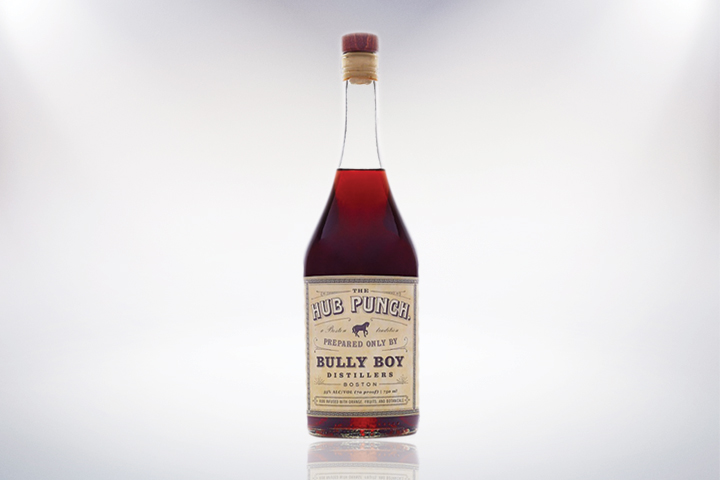
Bully Boy’s Hub Punch is a rum “infused with fruits and botanicals.” This cocktail was inspired by the original Hub Punch recipe, first prepared at the Hub Hotel in Thousand Island Park, N.Y. before it was brought to Boston and made popular in the 1800's.
Remember that this option isn’t a true mixed cocktail. Here's one way to enjoy it:
- 1 part Hub Punch
- 2 parts soda water
- 2 parts ginger ale.
Each 750 milliliter bottle is $29 at 35 percent ABV.
3. WATERSHED DISTILLERY’S OLD FASHIONED
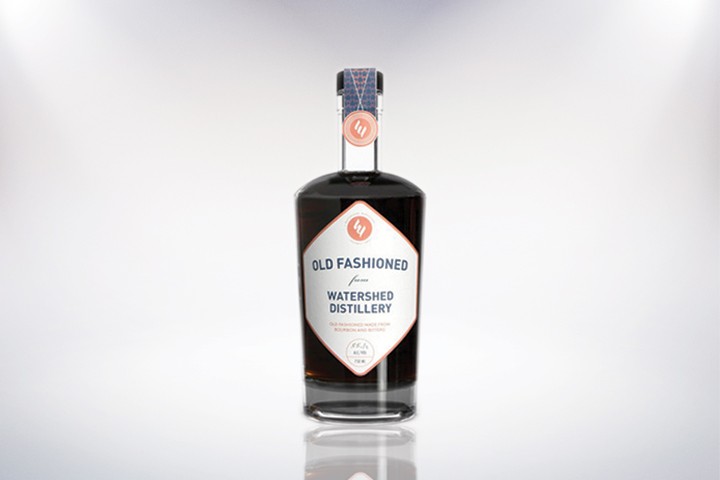
Columbus, Ohio-based distillery Watershed offers a delicious Old Fashioned. Ingredients include bourbon, bitters, raw sugar and Ohio cherry juice for a bold flavor with just a hint of sweetness.
Each 750 milliliter bottle is $35, at 35.1 percent ABV.
5. CAMPARI BOTTLED NEGRONI

This reliable favorite is a combination of London dry gin, Cinzano sweet vermouth and, of course, Campari.
Each 1 liter bottle is $40, at 25 percent ABV.
4. HOCHSTADTER’S SLOW & LOW ROCK & RYE
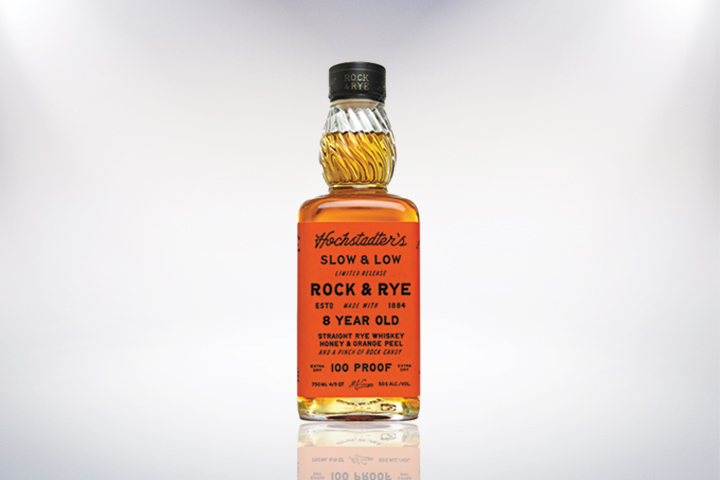
This limited-release concoction is made with eight-year-old 100-proof rye, honey, orange peel, and “a pinch of rock candy.” Not for the faint of heart, it is best enjoyed in small sips, and with lots of ice.
Each 750 milliliter bottle is $35, at either 42 percent or 50 percent ABV.
COMING SOON: COURAGE+STONE
Keep your eye out for comedian Aisha Tyler’s cocktail line, set to launch this fall. The cocktail-enthusiast’s line will include a whiskey Old Fashioned (with rye), a gin Old Fashioned (with grapefruit bitters), and a Black Manhattan.
Article published by Liquor.com
Youtube Culture - A Global Phenomenon
The booming world of Youtube is becoming a cultural phenomenon. Over the past 10 years, the vast platform has grown significantly since it was first established in 2005 by founders Chad Hurley, Steven Chen, and Jawed Karimin. Its content covers a wide range of topics and advice on those topics, offering tips in addition to the personal experiences of the individuals who create these videos. From sex education and relationship advice with youtuber Lacey Green, to clean eating and vegan knowledge from creators like Laura Miller and Niomi Smart; even mini science lessons with Hank Green that will help you survive whatever science class you may be struggling through. But youtube videos can also be shown through a different filter as an art form. For example, Casey Neistat or the Michalaks whose camera shots or, “silky montages” as Stef Michalak phrases it, can leave the watcher in awe of what they just experienced through their computer screens.
The different styles of videos and content are accessible to hundreds of millions of viewers. Another popular example of increasingly produced video content on Youtube are video blogs, also known as vlogs. These videos give a visual account of the behind the scenes architect and their every day life. Although it is compacted into a short 15-20 minute clip, it appears as if its almost a mini reality show, except it cuts all the overly dramatic crap. The viewer experiences real examples of another person’s life and point of view through a digital platform, and there is nothing quite like that out there.
However, some of the content created may be questionable in terms of its authenticity. For example, some creators may title their video with a catchy slogan to get views, also known as “click bate.” Between the capitalized, in your face titles and the regurgitated challenge videos, it is difficult to determine if some creators are just making their content for views.
Youtube has expanded drastically over the last 7 years, meaning the audience has changed and expanded over the course of that time as well. The concern of authenticity comes into play when individuals who have seen certain youtubers climb their way to the top of the stratosphere, so to speak, in terms of the income and fame that comes with having a popular channel. For example, youtuber PewDiePie has whopping 44 million subscibers, and further down in the youtube ranking is Zoella, who has a following of over 10 million subscribers. Popular content creators now rake in a generous revenue from their views and the opportunities youtube has allowed them.
However, back in the early days of the site, many youtubers speak about how they had a different sense of morality when it came to Youtube. The platform was just starting out, and many channel creators used it to express their creativity, and to share their unbiased opinions of topics and products with others, before ad sponsorship exploded in the youtube world. In the last year alone, advertisers displaying their ads on youtube has increased by 1,000%. So, how are viewers supposed to determine the honesty of the new generation of youtubers and their intentions towards their viewers? Other than taking their word for it, the proof is in the pudding, and the pudding is the quality of the types of videos that are being made.
One of the biggest corners of youtube is dedicated to its own section of creators called beauty bloggers or beauty gurus. To some, these youtubers that collaborate with makeup and clothing company’s may seem materialistic and it is in a sense. But there is also a lot of unbiased content produced by these so called beauty gurus who simply want to teach via tutorial style. As a woman, the pressure to look a certain way and to conform to social norms of what “perfect” is is impossible. Does youtube content unintentionally glorify this image of perfection and needing to be perfect? Maybe. Maybe such tutorials or recommendations on certain products involuntarily gives into that. Or maybe these are women who grew up wishing they had examples to learn from on certain concepts like makeup, and skin care. Beauty vloggers aren't simply limited to the outer appearance of beauty. They are creators of discussions and forums that implement videos on critical topics like body confidence and introverted personalities, with youtubers like Grace Victory, Estee Lalonde and Samantha Maria. Even delving into the "not so perfect" side of life and sharing their stories on depression or domestic violence. These are women who encourage and support others to be confident and that that confidence should be celebrated.
However, no matter how someone may view a situation, the creator included, your point of view will always be challenged by someone else. In this world of over 7 billion people, Youtube has at least 1 billion active users every month. “If YouTube were a country, we’d be the third largest in the world after China and India,” Youtube claimed. However, with high numbers comes an increase in the number of critiques. The comment section below these videos contain some of the most hateful, ugly, one-dimensional opinions and accusations that tear down Youtubers. Many content creators have shown their vulnerability by putting themselves out there, in a world full of scrutiny and judgement or “hate” as it is popularly phrased. Handling such criticality can be very overwhelming and eveyone handles it differently; from Zoella’s “Sometimes It All Gets A Bit Too Much” video to Jenna Mourney, aka Jenna Marbles, in her video “Reading Mean Comments.”
Youtube’s boundaries are limitless. However, the pros and cons of that freedom will always exist. It's simply part of the infrastructure that makes up this other-worldly Youtube culture.
[youtube id="v9yS1muZPW4"]
[C2E2 2016] brought droves of Comic fans to Chicago
Chicago’s answer to San Diego’s Comic-Con and New York’s NYCC gets bigger each year. Chicago’s C2E2 (Chicago Comic and Entertainment Expo), held over three days at McCormick Place, drew droves of fans eager to attend the star-studded panels and participate in cosplay showcasing.
Guests arrived donning their best costumes, many of them homemade, embodying their favorite pop culture icons. It’s easy to lose yourself in a crowd of passionate fans as you see costumed heroes like ‘Batman’ and ‘Deadpool’ walking around you.
Chicago’s own actor John Cusack took to the stage the first day to talk with fans about his influential films, Better off Dead, High Fidelity, and Say Anything. Fans were also able to pose for photo ops with Cusack and other guests.
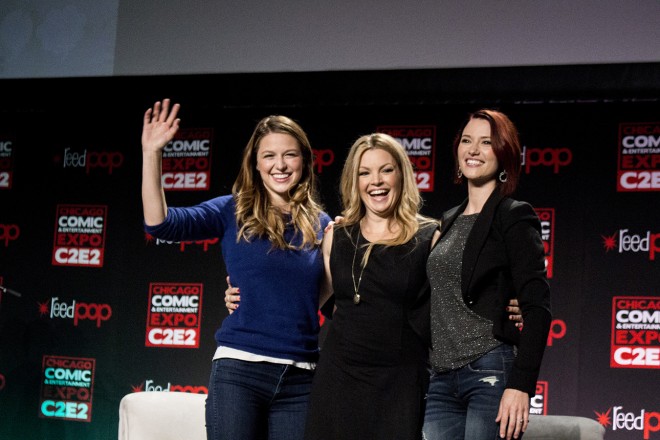
RubyHornet.com
Photo: Jesus J. Montero
The second day was highlighted by the Crown Championships of Cosplay, with participants competing for over ten thousand dollars in cash prizes. The second day also featured panels from Supergirl’s Melissa Benoist and Chyler Leigh. They took to the stage answering fans' questions as the new faces of women in the comic universe. Check out our photos below of Benoist and Leigh.
The final day ended with a bang as Golden Globe winner, Oscar winner, and Chicago Native Rhymefest performed from his Man in the Mirror 2.0 album, a tribute to Michael Jackson. Rhymefest also debuted his exclusive cover of the International Iron Man #1 comic issue based on his cover for the album, designed by Marco D'Alfonso has a part of Marvel's hip-hop variant cover series.
C2E2 is set to return to McCormick Place April 21-23, 2017.
2016 Republican Presidential Debate #1 - Hello, Cleveland!
The first Republican Presidential Debate was held last night. There were two of them if you counted the "Kids' Table" debate earlier, which included presidential hopefuls polling outside of the top 10. Anyone who tuned in hoping for the Donald Trump show was not disappointed since Trump was the event's main draw. The first question out of the gate was aimed at him, essentially asking, "Can you please promise not run as a third-party candidate?" Trump, pouting and nodding, said he wouldn't promise anything, won't rule out going rogue.
Kentucky Senator Rand Paul was the first to tussle with Trump on the main stage. Former Arkansas Governor Mike Huckabee made a sly dig at Trump in his closing statement, but instead shifted his focus to presumptive Democratic nominee Hillary Clinton. Leading establishment candidates like former Florida Governor Jeb Bush and Wisconsin Governor Scott Walker instead avoided direct or indirect engagement with Trump, trying to keep their distance from the lightning rod. Everyone's scrambling around Trump in some way, and it'll continue as long as the Donald is in the running. The laughs will keep coming.
Fox News' moderators during the big debate were Chris Wallace, Megyn Kelly, and Brett Baier. Each asked some surprisingly pointed questions of several of the candidates rather than serving up underhands and softballs. It was clear that part of the point of this first debate was to cull some of the herd, and Trump complained afterwards that he didn't think his questions were particularly fair (or balanced, wakka wakka wakka). It remains to be see if any culling will occur just one debate in. The next Fox-televised debates will be in Wisconsin in November (on Fox Business) and just ahead of the Iowa caucuses in January (on Fox News). Assuming the field remains as large as it is through Iowa, culling might continue to be the name of the game.
Let's do a brief rundown of the highlights, lowlights, winners, losers, and applause lines/zingers of the first Republican Presidential Debate.
"Rowdy" Roddy Piper (1954-2015): The All-Time Great That Wrestling Fans Loved to Hate
At UFC 190 over the weekend, Ronda Rousey dismantled Bethe Correia in just 34 seconds. (Combined length of Rousey's last three matches: 64 seconds.) Following the match, Rousey gave a shout out to "Rowdy" Roddy Piper, the wrestling legend who passed away last week at the age 61. Piper was one of Rousey's heroes and friends. She'd spoken to him just a few days before, and it's from Piper that the Women's Bantamweight Champ inherited the nickname "Rowdy." Rousey, elated by the win but showing hints of sadness, said she hoped Piper and her late father enjoyed watching the fight together.
Roddy Piper is the latest wrestling legend to die this year. While I always enjoyed Dusty Rhodes' promos (and I regret not writing about his passing a several weeks ago), I always had more of a connection to "Rowdy" Roddy Piper. He was a tough-guy madman, a prototype for heels and tweeners in the era of professional wrestling I grew up watching. Roddy Piper was the raging, motor-mouthed Daffy Duck of the squared circle, just the sort of crazed SOB that people were supposed to love-to-hate.
But really, in the end, people just wound up loving Roddy Piper.
[youtube id="yBgk7z23zfc"]
While discussing the documentary Bodyslam: Revenge of the Banana!, I mentioned that the best wrestling characters are really just extensions of a person's real personality. If that's the case, Roddy Piper was probably a certifiable loon. I think he once said he had more issues than TV Guide, and it played into his larger-than-life character. He'd blast out invective, often at high speeds, much of it crazed, and yet consistently compelling and oddly brilliant. Re-watching several of his promos over the weekend, I noticed again how his delivery had a zonked-out sing-song. He was part obnoxious schoolboy and part deranged parrot.
Listen to him again. Piper's voice is like an oscilloscope gone haywire, or perhaps the highs and lows in his voice were like a seismograph that registered every tremor of fear from those nearby. How much of this stuff had Piper written ahead of time and how much of it did Piper ad lib on the spot? The brilliance is that the audience, even contemporary smarks, aren't sure. The character's shtick is so well realized that even in the cartoony world of 80s pro-wrestling, it seems real.
Roddy Piper was born Roderick George Toombs. His childhood was a rough one, and he ran away from home around junior high or high school. The old cliché was you'd run away to join the circus. Running away to join professional wrestling doesn't seem much different, really. The circus and the squared circle are built on spectacle, performance, entertaining danger, and the workers learning how to speak a dialect of carny so the marks in the crowd don't catch on.
[youtube id="c9rrgJXfLns"]
Piper made his in-ring debut in Winnipeg at age 15 against Larry Hennig, the father of the underrated all-time great Mr. Perfect. Piper was enhancement talent during the rookie years of his career (aka a jobber, aka he made other wrestlers look good by losing) and learned the ropes of the business the old-fashioned way. Eventually Piper turned up in Los Angeles to feud with Chavo Guerrero Sr., and then Georgia to tussle with Ric Flair and Greg Valentine. When he signed with the WWF in the mid-80s, his career took off. Though Hulk Hogan was the company's primary draw, Piper was Hogan's antithesis and adversary. As much as Hogan and the other wrestlers on the roster, Piper was instrumental in making the first WrestleMania and subsequent wrestling events of that era major hits.
Piper's odd place in pop culture is mostly rooted in that Rock 'n' Wrestling phase of the 80s. He did make a few films, many of which are cult-movie also-rans, but the best of which is John Carpenter's 1988 masterpiece They Live. In it, Piper plays a tough drifter named Nada who uncovers an alien plot to turn humanity into a bunch of compliant, passive consumers. There's a high-minded critique of the 80s similar to Alex Cox's Repo Man, but there's also a schlocky B-movie quality that's perfect for the nature and execution of the conceit. How do you fight consumerism? Sunglasses and shotguns, buddy. In that weird intersection between low-brow and high-brow, They Live and professional wrestling were two primary influences on artist Shepard Fairey.
It's Piper's persona as a badass that comes through in They Live. Perhaps Kurt Russell could have played Nada, but the whole feel of the film would have been different. Without Piper's in-ring work as a wrestler, Carpenter probably wouldn't have included the kookiest street fight in cinematic history, let alone allow the scene to go on as long as it does. Piper's a great fit for the movie for much the same reason that the Roddy Piper character was an ideal wrestling gimmick. Piper is just playing himself, or at least an extension of himself. He may have been born Roderick Toombs, but Roddy Piper wound up being the genuine article.
[youtube id="uzvNPq_5P2g"]
There's one particular promo from Piper that I've always loved. In it, Piper smashes a real beer bottle on his head. Bleeding profusely from his brow and possibly only half-conscious, he then constructs a monologue that's part intimidating rant and part logical syllogism. There's determination in his voice, and some of that may just be hyper-focused concentration so he doesn't pass out. Somehow, Piper is cognizant enough to form sentences, and even, like the pro he is, turns so he's facing the correct camera when the angle is switched. Piper pauses as the cut happens, composes himself, concludes his speech, and then walks off.
Maybe he passed out when he was away from the crowd and the camera. Probably not, though. I want to believe in the character of Roddy Piper.
Just watch that promo. Seriously, don't mess with him. Remember the line he delivered in They Live?
"I have come here to chew bubblegum and kick ass... And I'm all out of bubblegum."
Truth is, Piper was always out of bubblegum.
On Cecil The Lion, Walter Palmer and the Morality of Hunting
Anyone with an internet connection can hardly have missed the outpouring of grief which accompanied Walter Palmer's murder of Cecil the lion outside Hwange wildlife sanctuary in Zimbabwe last month. The nature of Cecil's death was particularly nasty, having been lured from the sanctuary with meat, only to be severely wounded with a crossbow bolt and finished off, almost two days later, with a bullet. He was then decapitated, skinned and his corpse left to rot in the sun. That those responsible allegedly tried and failed to then destroy Cecil's tracking collar only adds to the sordid nature of the killing. Hunt guide Theo Bronkhorst and landowner Honest Ndlovu have both been charged with poaching by the Zimbabwean authorities. Walter Palmer returned to the US, but is now being sought for extradition.
The sordid business has reignited the debate surrounding the morality of trophy hunting, an industry, worth $190m in Africa, which revolves around people paying thousands of dollars to kill a wild animal under conditions guaranteed to ensure the hunter an easy, safe kill. That the hunters are almost invariably rich, white and Western adds an undercurrent of colonialist entitlement to the situation. For all the consensus on the nastiness of the act of hunting itself, reaction to Cecil's death has peripherally raised other questions about the hypocrisy of selective outrage and the wider, often ignored problems of humanity's role in selecting which species are permitted to live and which are not.
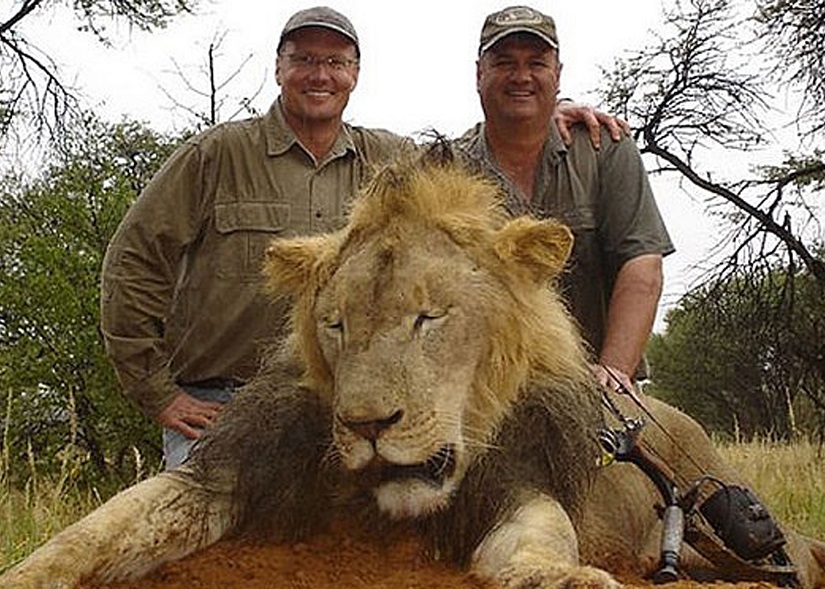
While plenty have flippantly asked why Cecil's death in particular has drawn such ire when hundreds of lions have been killed recently in Zimbabwe alone, there's nothing inherently wrong with taking one notable case as a starting point for asking questions about a wider issue. Just as we mourn family members and friends but not every single other human death on the planet, it is unrealistic to expect identical outpourings of grief towards animals of whom we have no direct understanding or knowledge, even if many share the concern over plummeting wildlife population numbers. The fact Cecil had a name and was beloved among those who knew him is indeed important, because it reminds us that if even this special lion can be so heartlessly butchered, what chance do the rest of them have?
Similarly, it is a false equivalence to ask why Cecil's death matters after he led a relatively long and free life when mistreatment of animals in the Western world is so prevalent, particularly when it comes to such practices as battery farming the animals producing the food which ends up on supermarket shelves. Animal welfare in all areas of life undeniably needs to be put under much greater scrutiny, but as shocking as Cecil's extended suffering prior to his death was, it was the exception rather than the rule for an industry which values 'clean' kills, if only for the hunter's pride and the inconvenience of having to track a wounded creature for hours and days afterwards to collect the trophy. The difference between battery farming and hunting is that, for its undeniable horrors, battery farming ultimately serves a purpose in creating food. Hunting means killing an animal for no other discernable reason than the hunter's personal pride.
The real issues arise from the resulting online outrage. Few would argue with the anger and grief which followed Cecil's death, but the form it has taken and the aims it has persued are considerably more problematic. The internet's lynch mob tendencies when it comes to online shaming has a profoundly negative track record when it comes to debating and reasoning out difficult issues. This can be attributed to the tendency for any voices dissenting from the consensus to be immediately shouted down, if not turned into a target themselves. It is morality by echo chamber, where right and wrong are absolutes and cruelty and injustice are called out not to improve the lives of others or make a fairer, more ethically sound world, but as a statement of one's virtue and for the approval of likeminded peers. It is a dangerous precedent which corrupts concepts of truth and free speech.
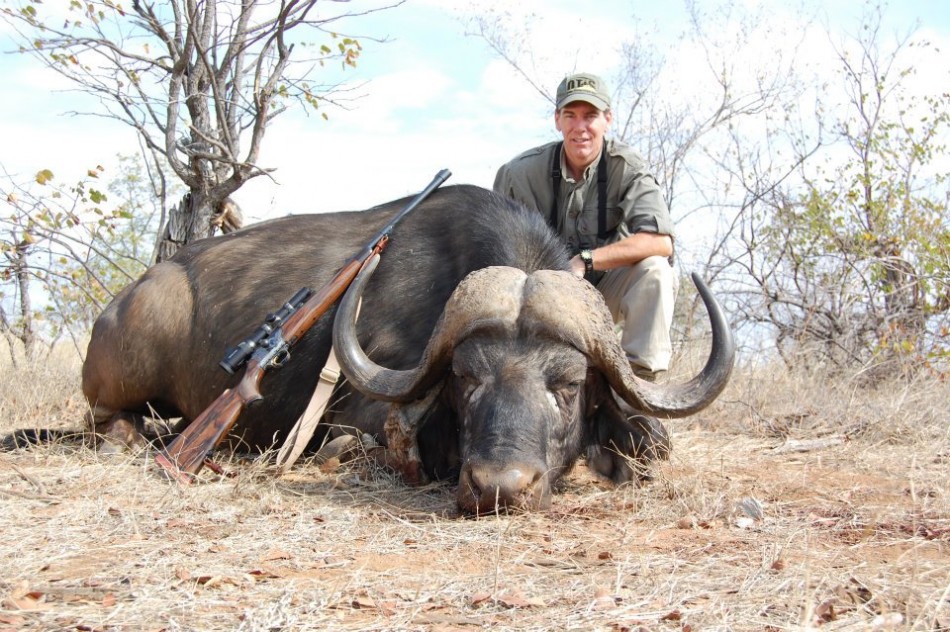
Consider the renewed calls for trophy hunting to be banned. On the face of it, this is an easy case to make: no living being should be destroyed for the sake of another's ego. The easiness of the target unfortunately means that any attempt to introduce complexity into the debate is roundly ignored, even condemned. In isolation, hunting is a deeply unpleasant practice. Paradoxically, it may also represent the best chance for many of the animals in question to be saved from extinction. There's no question that many of the benefits of hunting, as stated by its most ardent supporters, are grossly overblown. A 2013 study, for instance, revealed that little of the money generated by the industry ended up helping local communities in any meaningful way. Equally, the regulations in place to control the quotas of hunted animals is notoriously lax, while illegal hunting, as Cecil's case demonstrates, is rife. The dwindling numbers of many of the most prized trophy animals only further proves how horrendously mismanaged the whole situation continues to be.
The wrinkle is that hunting is far from being the only threat to these animals' survival. Less malicious, but arguably vastly more dangerous, is the ballooning human population growth in Africa, increasingly infringing on wildlife hunting grounds and consuming many of the resources they rely on to survive. This in turn leads to a rise in the number of animal attacks on humans, causing the animals to be hunted down either for retribution or as a guarantee of safety. An increase in population also means an increase in farming, requiring extensive grazing ground and only further eating into the territory where wildlife is able to sustainably survive. In Asia, the increased affluence of nations like China and Vietnam means demand for ivory and animal bone used in traditional medicines or as status symbols has skyrocketed, proportionately increasing their poaching value in relation to how stringently their trade is controlled or outlawed. That is to say nothing of the dangers of climate change, pollution and countless other factors: you can read more about those at the WWF website.
With corruption and mismanagement endemic in the systems supposed to protect the most vulnerable animals, it is no surprise that increasingly affluent and powerful poachers are coming up with more grotesquely innovative and technologically advanced methods of securing their prizes with every passing year. The sad truth is that humanity will inevitably kill off anything which does not have tangible value in being kept alive. For that reason, a properly regulated hunting industry may indeed play an instrumental role in one day guaranteeing the survival of certain species. If there is money to be made in breeding these animals to fund a profitable industry, even one revolving around their eventual deaths, humanity will find a way. If their survival relies on nothing more than sentiment, current and historical form suggests extinction is surely guaranteed.
Hunting is a deeply unpleasant practice, but to ban it outright may ultimately prove destructive in view of greater but less easily morally quantifiable threats to animal survival elsewhere. This is not to suggest that there may not be alternatives - this article for the New Yorker details how Rwanda has revived its gorilla population through ecotourist permits - but that relying on reactionary judgments rather than careful reasoning is not the way to find them. Hunting will almost certainly continue to exist, one way or the other. As despicable as its brutality is, it seems preferable to me that the human desire to kill animals be at least controlled and channelled in a productive and responsible way, even if we're a long way from that point right now, rather than being left solely to poachers and profiteers.
A concluding note for those who have participated in the witch hunt for Cecil's murderer, Walter Palmer. As Jimmy Fallon, of all people, very correctly pointed out, Palmer's conviction, or as some social media extremists childishly demand, death, ultimately achieves nothing. Yes, he should be held accountable for his crimes, but while focusing so much rage and attention on one man may satisfy one's personal thirst for vengeance and receive plenty of likes and retweets in the online echo chambers, it will neither bring Cecil back to life or help protect the countless other animals destined to be slaughtered as a result of illegal hunting and poaching. If anything, it merely proves that the motives of those calling for his death for their personal satisfaction are no better than those of the man himself. True justice is not taking an eye for an eye. Palmer turning Cecil into a trophy does not justify seeking to turn Palmer into one. Instead, to quote Fallon again, honour Cecil by making good from the tragedy of his death. Debate and donate. Don't blindly hate.
Hulkamania Has Finally Run Dry
"Train, say your prayers, eat your vitamins, be true to yourself, true to your country - be a real American," Hulk Hogan used to say. What happens when your hero turns out to be everything he stood up against?
Throughout the '80s and '90s, Terry Bollea, better known as the larger-than-life Hulk Hogan, was pushed as the face of World Wrestling Federation (as World Wrestling Entertainment was known as back then) at a pivotal time when wrestling was universally praised and reaching a new height in its popularity. During this time, Hogan essentially became the face of American pop culture as Hulkamania ran wild on magazine covers, TV shows, shirts, toys, cartoons, and more.
[youtube id="JD4Y6TqmAfY"]
However, The National Enquirer, in collaboration with Radar Online, recently got wind of Hogan's racist tirade during "pillow talk" on a sex tape that was recorded several years before clips and images were leaked by Gawker back in 2012. During a conversation about Hogan's daughter, Brooke, the wrestler aired his grievances to his partner, Heather Clem, about her failing career:
I don't know if Brooke was fucking the black guy's son. [...] I mean, I don't have double standards. I mean, I am a racist, to a point, fucking n****s. But then when it comes to nice people and shit, and whatever. [...] I mean, I'd rather if she was going to fuck some n*****, I'd rather have her marry an 8-foot-tall n***** worth a hundred million dollars! Like a basketball player!
[youtube id="P05qxH2pISQ"]
In a surprising response, the WWE has fired Hogan from his contract, removed him from their iconic Hall of Fame, ceased production and sale of his merchandise, and have practically wiped away all mention of him on their website. Removal of other Hulk Hogan, like documentaries and matches housed on the WWE Network, the company's On Demand subscription service, may soon follow. The company released a statement concerning Hogan's firing:
WWE terminated its contract with Terry Bollea (aka Hulk Hogan). WWE is committed to embracing and celebrating individuals from all backgrounds as demonstrated by the diversity of our employees, performers and fans worldwide.
However, this isn't the first time Hogan has been publicly exposed as a racist. Despite a Shade 45 interview that took place in 2012 in which Hogan very openly and comfortably used the n-word to describe his friendships with various rappers like Birdman and Lil' Wayne and former WWE wrestler Booker T, WWE never went to this level to distance themselves from the very person that helped them achieve success.
For all intents and purposes, this is the end of Hulk Hogan as we know it, especially considering he was essentially the face of American culture at the height of his popularity. There's no turning back from racist tirades, as evidenced in recent years by Donald Sterling, Michael Richards, and Donald Trump, as it ought to be.
And yet, given the landscape of modern American sociology that has been focused on combating racism and other forms of inequality over the past several years, the Hulkster's theme song's claims of him being "a real American" carries with them a sense of irony following the revelation. 30+ years after he transcended wrestling and became an American cultural icon, has Hogan indirectly come to represent the modern white American male in the spotlight?
For his part, Hogan has issued an exclusive apology to People Magazine following the allegations:
Eight years ago I used offensive language during a conversation. It was unacceptable for me to have used that offensive language; there is no excuse for it; and I apologize for having done it.
This is not who I am. I believe very strongly that every person in the world is important and should not be treated differently based on race, gender, orientation, religious beliefs or otherwise.
I am disappointed with myself that I used language that is offensive and inconsistent with my own beliefs.
If Hulk Hogan ever returns to the ring, with his hand to his ear in one of his many iconic poses, he should be met with total and complete silence. Hulkamania has finally run dry.
Inside Chicago Police's Secret Cell Phone Spying Agreement with the FBI
Post written by special guest contributor, Freddy Martinez.
Over roughly the last year I've worked to uncover quite a bit about cell phone spying that Chicago Police has been doing since at least 2008. CPD has been quietly purchasing IMSI catchers (usually called Stingrays), which they describe as “military-grade electronics” which act as fake, portable cell phone towers to track cell phones. These Stingrays are capable of identifying all cell phones in a given area (roughly 1 Km in diameter, depending on the power used) and “filtering” out to a given wanted IMSIs (roughly, a number plus other identifying information). The basic function of an Stingrays is to show up to an arbitrary location, begin transmitting as a “real” cell phone tower, invalidating your current phone connection and forcing your phone to hand over its information. This information could mean dialed numbers, text message information, even your voice content all without a warrant. Through the Freedom of Information Act (and two FOIA lawsuits), we have learned that CPD claims to have no written procedures for when these Stringrays are deployed and further that the police department claims to have no records of this “military-grade” equipment being checked in and out of their Technology Lab.
Across the country we have seen that police departments have been signing non-disclosure agreements (NDA) with the FBI and Harris Corporation which forces them to keep quiet on how Stingrays are deployed. In Erie County, New York, the ACLU fought all the way to nearly the Supreme Court of New York to force a police department to disclose its NDA. In fact, when CPD purchased their Stingray, they also signed an NDA with Harris and the FBI We have obtained a fully Non Disclosure agreement between from Chicago Police and the FBI and are publishing it here for the first time.
In analyzing the NDA, we notice this is the exact same NDA signed by the Erie County and CPD with the FBI and Harris Corporation. This indicated these agreements are boilerplate and used to hide critical records from the public. In fact, the police are not allowed to even buy the equipment unless they alert the FBI to routine public records requests. And both Erie County Sherrif'sand Chicago Police should “at the request of the FBI, seek dismissal of the case in lieu of using or providing, or allowing others to use or provide, any information concerning the Harris Corporation wireless collection equipment.” (page 6) So in the same breath that they claim this technology can save lives from dangerous criminals and terrorists, the case work could be thrown out at the direction on the FBI. It's a perplexing level of secrecy for local police to engage in.
Of course, the NDA is not just the entire story, but part of a pattern of secrecy around Stingrays and their use. As previously mentioned, CPD claims to have no record of ever deploying the Stingrays or checking it and out of Tech Lab. Yet at the same time, they claim that court records are exempt under US code (18 U.S. Code § 3123) Pen Register/Trap and Trace provisions, which was significantly expanded after 9/11, and which CPD claims as the legal basis for their authorization. This is particularly relevant since PR/TT does not require a warrant for records, which might conflicts with IL SB 2828 law for real-time location tracking. On top of the secrecy around FOIA, cops have gone so far as to invent Confidential Informations to attribute information to instead of showing Stingray use in court. And this pressure to local police seem to be coming from the top levels of Obama DoJ. All of this is organized from the federal level down and Chicago Police seems to have no issue with the vast secrecy.
As our FOIA case progresses, we hope to share further updates with readers in this space.

